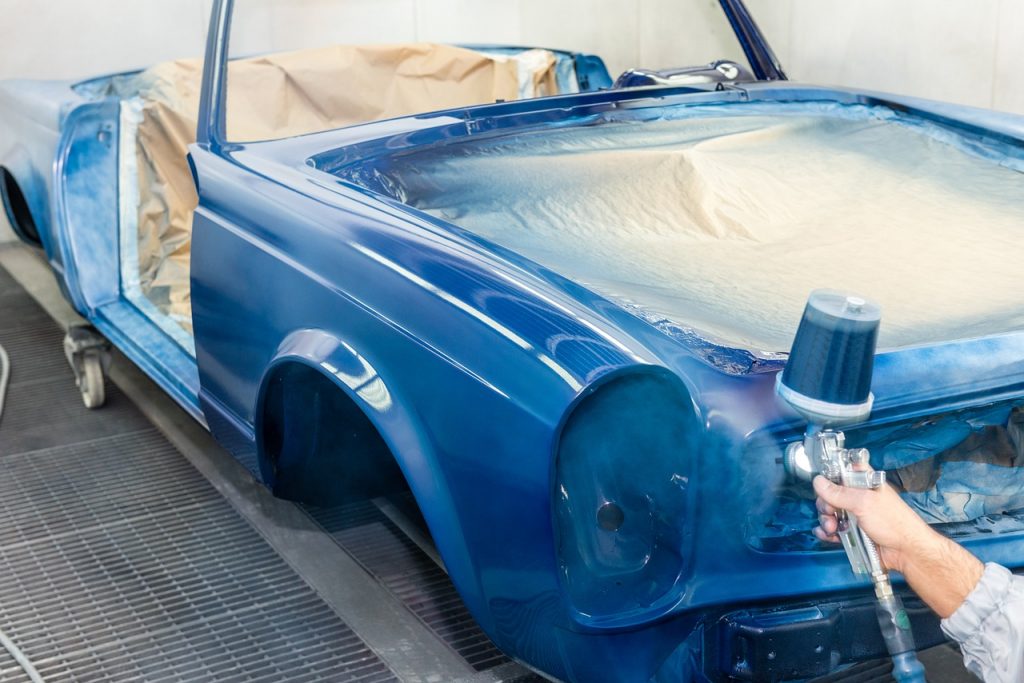To make your car look like new again after repainting it, the best thing to do is add a finishing touch, namely a body varnish. Let’s take a closer look at the characteristics of the different types of clearcoats, tips on how to use this product and where you can find an auto body shop for an entire automotive repaint or touch-up painting service.
Car body varnish: its characteristics
Definition
Body clear lacquer is a preparation designed to cover the paint to protect it and give it a shiny appearance and a perfect finish.
You can combine it with a hardener to obtain an even shinier appearance.
Properties
This clear body coat is usually based on acrylic resin. It has the following characteristics and properties:
– It is resistant to extreme weather conditions and UV light;
– It dries quickly;
– It has a good covering power;
– It is anti-corrosive;
– It adheres perfectly to the support;
– It offers a total brilliance in the duration;
– It is scratch and impact resistant;
– Easy to use;
– It makes it possible to obtain a smooth and uniform surface;
– It dries quickly;
– It has a good covering power;
– It is anti-corrosive;
– It adheres perfectly to the support;
– It offers a total brilliance in the duration;
– It is scratch and impact resistant;
– Easy to use;
– It allows to obtain a smooth and uniform surface;
– It requires only one application on the paint.
This transparent body coat is colourless and ideal for car bodywork but can also be applied to motorcycles, vans, caravans, motor homes, boats, trailers, etc.
Bodywork varnish: advice for use
Good to know: Bodywork polish is usually available in spray cans for treating small surfaces. It is preferable to buy a varnish can whose capacity is often between 1 and 5 litres for complete bodywork.
Advice for use
First of all, it is essential to wear protective equipment such as a paint suit, mask, goggles and protective gloves to safely handle a varnish intended for the bodywork of a vehicle.
Also, it is preferable to work in a ventilated room. Under no circumstances should you apply a varnish to a car body in the open air, especially if it is very windy. This product often contains VOCs extremely bad for health and the environment.
Before applying this type of product, it is strongly recommended to clean the vehicle thoroughly. It is then advisable to mask the elements to be protected, such as windows, optics, chromes, wheels, license plates, etc.
Except for the ready-to-apply spray varnish (in a canister), the body varnish in a can is applied with a spray gun (as illustrated in the picture below). It is to be sprayed on the bodywork paint by back and forth movements. You can use either the spray canister or the paint gun so that the varnish is homogeneous on the surface of the bodywork.
After complete drying, it is necessary to polish the bodywork to obtain a perfect finish and shine.
Note: The quantity of hardener mixed with the varnish should not exceed 20% of the total product to be applied.
Doing it all by yourself can be an immensely satisfying experience, but not everybody gets the job well done, and not everyone can do just everything. Also, the price of body paint varies according to its quality and packaging, and possibly not every DIY enthusiast will know about all this. If the above sounds a little complicated or you don’t want to take any risk with your car’s bodywork, that’s when you need to call a professional auto body shop.




